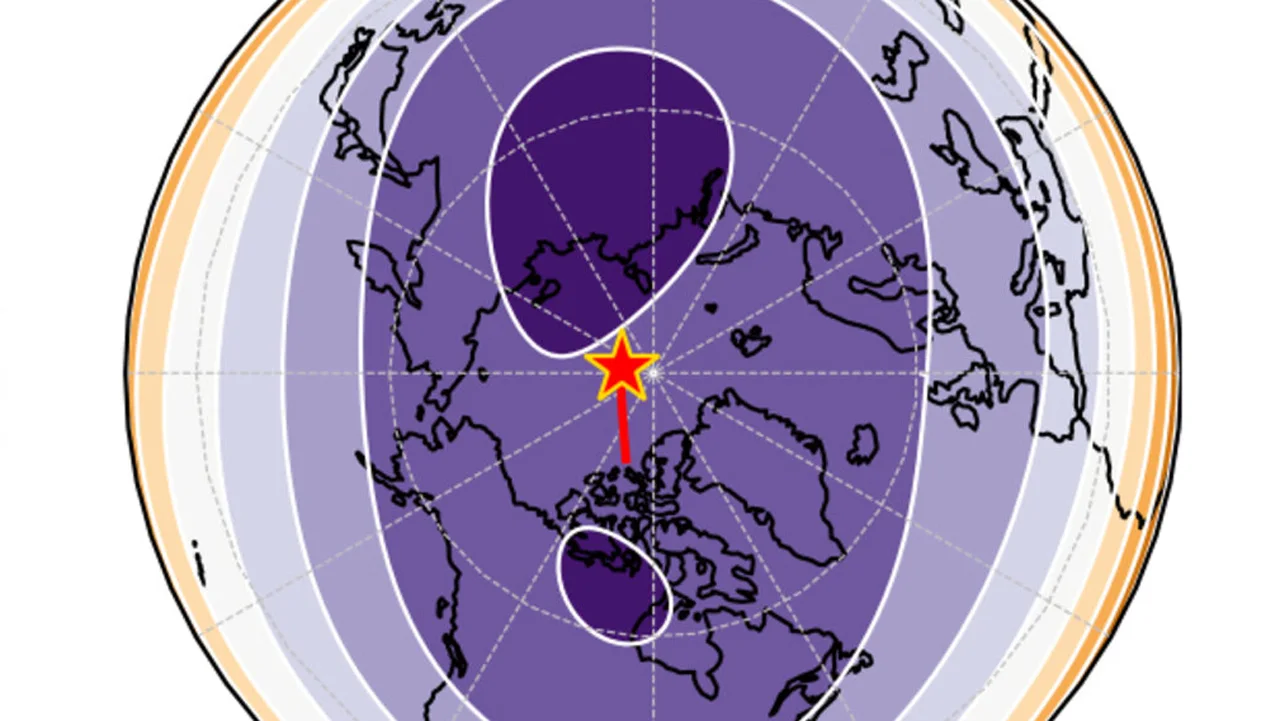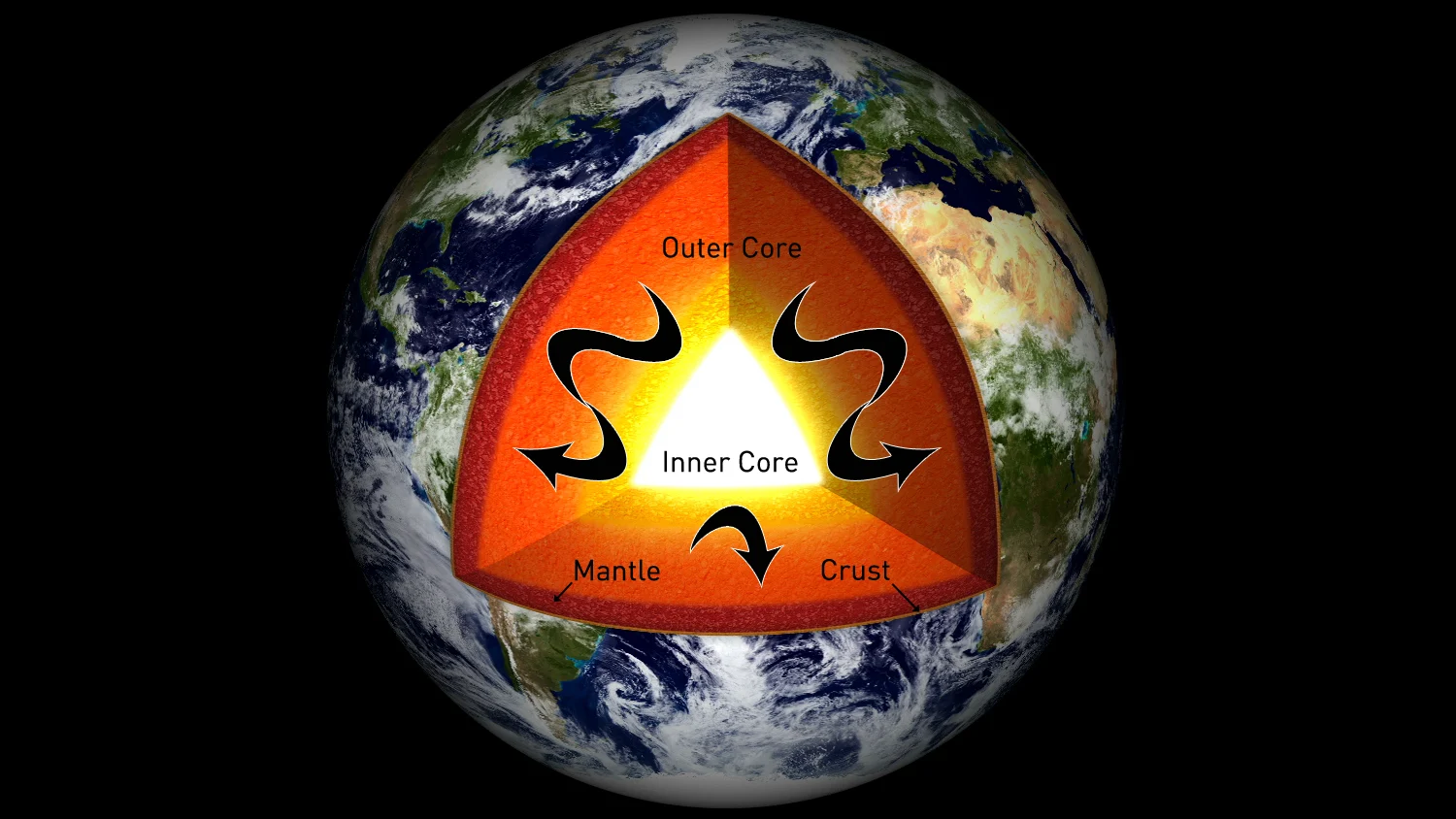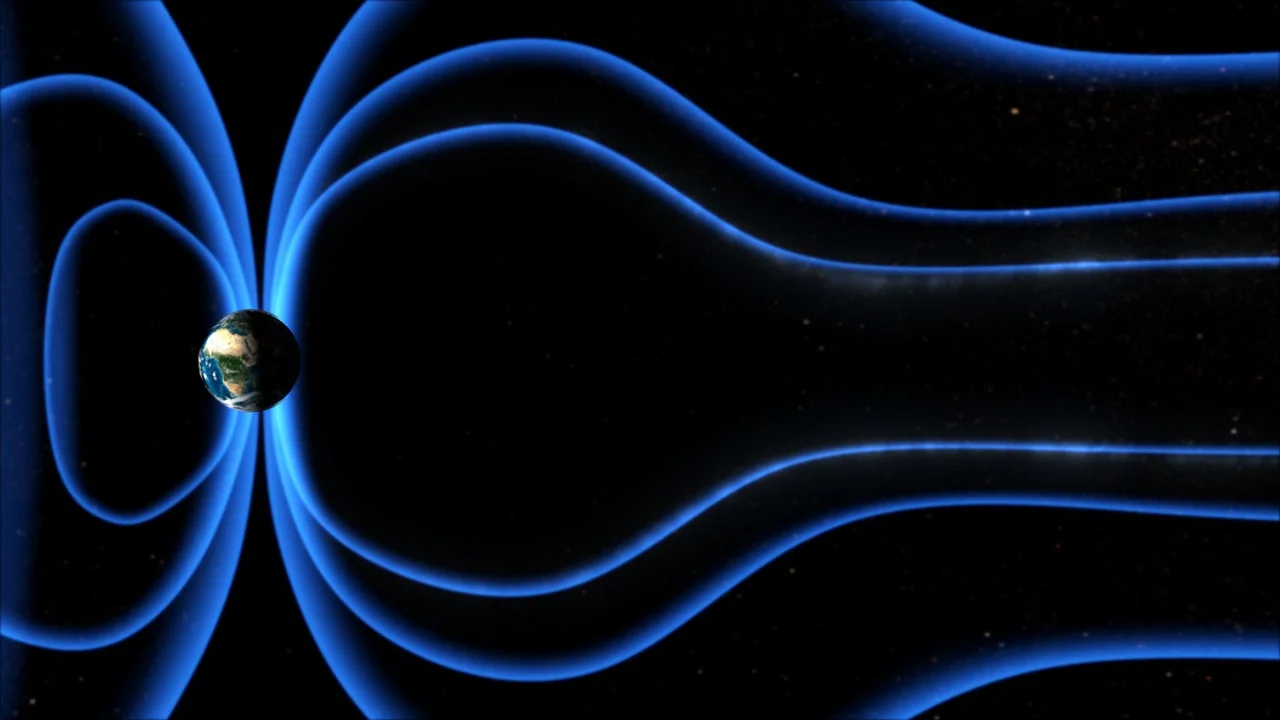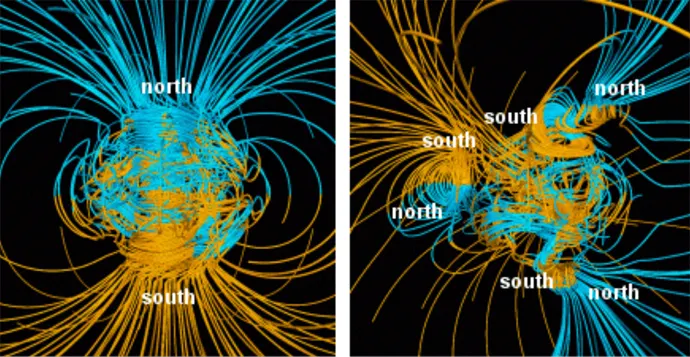
Shifting Magnetic North may be caught in 'tug of war' between Canada and Siberia
Earth's Magnetic North Pole is leaving Canada for Siberia, and scientists may have discovered why!
The mystery of Earth's shifting Magnetic North Pole may have been solved. Decades worth of satellite data has revealed two large patches of magnetism - one under Canada and the other under Siberia - that have Magnetic North locked into a perpetual 'tug of war' across the Arctic. Now, the Siberian patch is winning.
Earth has three distinct north poles. The geographic north pole is centred at the exact 'top' of the planet and never moves. The geomagnetic north pole is where Earth's magnetic field would appear to be focused in the north if you could see it from far out in space. Its position has shifted slightly since it was identified, and it is currently located over Ellesmere Island, across the Nares Strait from Greenland. The magnetic north pole, or Magnetic North, where compasses point toward, is also due to the planet's magnetic field. Its position differs from the geomagnetic pole, however, because it takes into account all of the small-scale effects of magnetism in Earth's crust, mantle and outer core.

The position of all three of Earth's north poles, and their forecasted positions for 2025. Credit: World Data Center for Geomagnetism, Kyoto
The overall orientation of Earth's geomagnetic field doesn't change much. As it turns out, those small-scale influences are fairly important for the exact position of Magnetic North. In fact, they could be the key to why Magnetic North has been migrating out of Canada, towards Siberia, for over 100 years.
In a new study published in Nature Geoscience, Philip Livermore and Christopher Finlay from the University of Leeds, and Matthew Bayliff from Denmark's national space institute, DTU Space, used decades of satellite data to map out these small-scale magnetic influences. What they found were two large 'patches' of magnetism along the boundary between the Earth's mantle and outer core, one located under Canada and the other under Siberia.

The tug-of-war between two magnetic 'lobes' deep within the Earth has been mapped out, revealing why Earth's Magnetic North is shifting position. Credit: ESA
"Using data collected over two decades by satellites, including ESA's Swarm trio, we can see that the position of the north magnetic pole is determined largely by a balance, or tug-of-war, between two large lobes of negative magnetic flux at the boundary between Earth's core and mantle under Canada and Siberia," Livermore said in an ESA press release.
"By analyzing magnetic field maps and how they change over time, we can now pinpoint that a change in the circulation pattern of flow underneath Canada has caused a patch of magnetic field at the edge of the core, deep within the Earth, to be stretched out," Livermore explained. "This has weakened the Canadian patch and resulted in the pole shifting towards Siberia."

*The shift of Magnetic North has accelerated enough that it forced NOAA to issue an early update to the 2015 release of their World Magnetic Model, which helps calibrate GPS coordinates on Earth. As shown in the inset, the predicted locations of the pole for 2019 and 2020 (pale yellow) were badly out of alignment with their true locations (bright yellow). Credit: NOAA NCEI/CIRES/Scott Sutherland
Records show that the position of Magnetic North slowly meandered around the Canadian Arctic for some time. Ever since the 1990s, however, it has been making a sprint towards Siberia, travelling around 50-60 kilometres per year, and it doesn't look like it's going to slow down anytime soon.
"Models of the magnetic field inside the core suggest that, at least for the next few decades, the pole will continue to drift towards Siberia," Livermore told the ESA.
"However, given that the pole's position is governed by this delicate balance between the Canadian and Siberian patch, it would take only a small adjustment of the field within the core to send the pole back to Canada."
WHAT'S GOING ON HERE?
Earth's geomagnetic field is produced deep within the planet, by the movement of the material in the liquid outer core.
Both the solid inner core and the liquid outer core are composed mainly of a combination of iron and nickel. The inner core is compressed so much that it is solid, despite having a temperature of roughly 6,000°C. In the outer core, where temperatures are more like 4,500-5,500°C, the metals remain liquid and become ionized in the extreme heat. Churning like the water in a boiling pot, the hotter material closer to the solid core rises towards the surface and cools, while the cooled (and thus denser) material sinks back down towards the inner core.

The different layers of Earth's interior, showing the circulations within the outer core. Credit: NASA GSVS/Scott Sutherland
This convection, combined with the Coriolis effect produced by the rotation of the planet, causes the ionized metals (essentially charged particles) to produce electric fields. The moving electric fields, in turn, produce magnetic fields.
Since the bulk of the material in the outer core is all circulating in the same general direction, the magnetic fields produced as it moves mostly point in the same direction. Thus our planetary magnetic field is produced. It stretches out beyond the Earth's surface, out to a distance of about 58,000 kilometres into space, which is well beyond the ring of geostationary weather and communications satellites.

Earth's magnetic field surrounds the planet, stretching away from the direction of the Sun due to the solar wind. Credit: NASA
Because the outer core is liquid, however, there are always random, chaotic eddies and turbulence in the circulation of the material there. These random, small-scale changes, as well as influences from solar activity, the solar wind, and the changes in Earth's ionosphere as the atmosphere heats during the day and cools at night, cause the magnetic field to shift and change in response.
Sometimes these are temporary changes, and sometimes they are more long-term and progressive, like the way the magnetic poles 'wander' in the Arctic and Antarctic.
WHAT DOES THIS MEAN?
At its core (if you'll pardon the pun), this is nothing to worry about.
The movement of the magnetic poles is a very significant and important issue for those who manage how we navigate, how we orient ourselves in the world, and how satellites and other technologies operate. In everyone else's day-to-day lives, though, the shifting of Magnetic North is of little concern.
If you've heard the term "pole flip" in the news, on social media, or in the blogosphere, this is also not something to be worried about.
There is real science behind the idea that Earth's magnetic poles 'flip'. In places like the mid-Atlantic ridge, scientists have found evidence that the orientation of the magnetic field flips every few hundred thousand years or so.

Magnetic polarity changes along the mid-Atlantic ridge, where magma wells up along the centre-line of the Atlantic Ocean to cool and solidify. Credit: U.S. Geological Survey
Based on the width of the sea-floor bands, in extreme cases, some pole reversals took less than 100 years. Some lasted only around 200 years before they flipped back. On average, though, they happen on time scales of once every half a million years, and they take thousands of years to complete.
The 'doomsday' scenarios push narratives that are far more dramatic and completely unrealistic. Magnetic reversals are portrayed as world-ending events, where the entire core of the planet flips 180 degrees, turning Earth's crust on its side, destroying everything on the surface.
That's not what happens during a pole flip, though.
By tracing these magnetic anomalies along the ocean floor, scientists have found a total of 183 pole reversals, just in the past 83 million years.
In that same 83 million years, however, we have not seen any catastrophic changes in the Earth's surface. If we trace the movement of the continents back through 90 million years ago, due to plate tectonics, it does not look that different from Earth today. We wouldn't see that if Earth's surface tilted on its side every time there was a magnetic polarity reversal.
This isn't to say that there would be no impact from such an event.
If Earth's magnetic field polarity were to flip within the next 100 years or so, it would present a variety of problems for our modern, technological society. It could also result in impacts on the health and well-being of anyone living at the time.
When Earth's magnetic polarity 'flips', it isn't a sudden change of the overall magnetic field. Thus, all compasses would not suddenly point south. Instead, it will be more of a weakening of the global magnetic field, so that the smaller-scale magnetic patches would dominate.
NASA modelled this once and found that we would likely end up with three different magnetic axes - thus three north magnetic poles and three corresponding south magnetic poles.

A supercomputer model of the current magnetic field (left) and what the field would look like when it is 'flipped'. Credit: NASA
According to NASA, depending on the exact configuration of the field(s) during a flip, most of the planet would still have a strong magnetic field, protecting against solar activity. Some regions of Earth may receive less protection than others, which would mean greater exposure to solar radiation and cosmic ray particles. The field may not stretch out as far into space or deliver as much protection there, so satellites and spacecraft in orbit would be at higher risk of experiencing anomalies and failures.
We would most likely experience significant impacts, but it would most definitely not be the end of the world.
Sources: Nature Geoscience | ESA | World Data Center for Geomagnetism | NOAA | USGS | NASA










